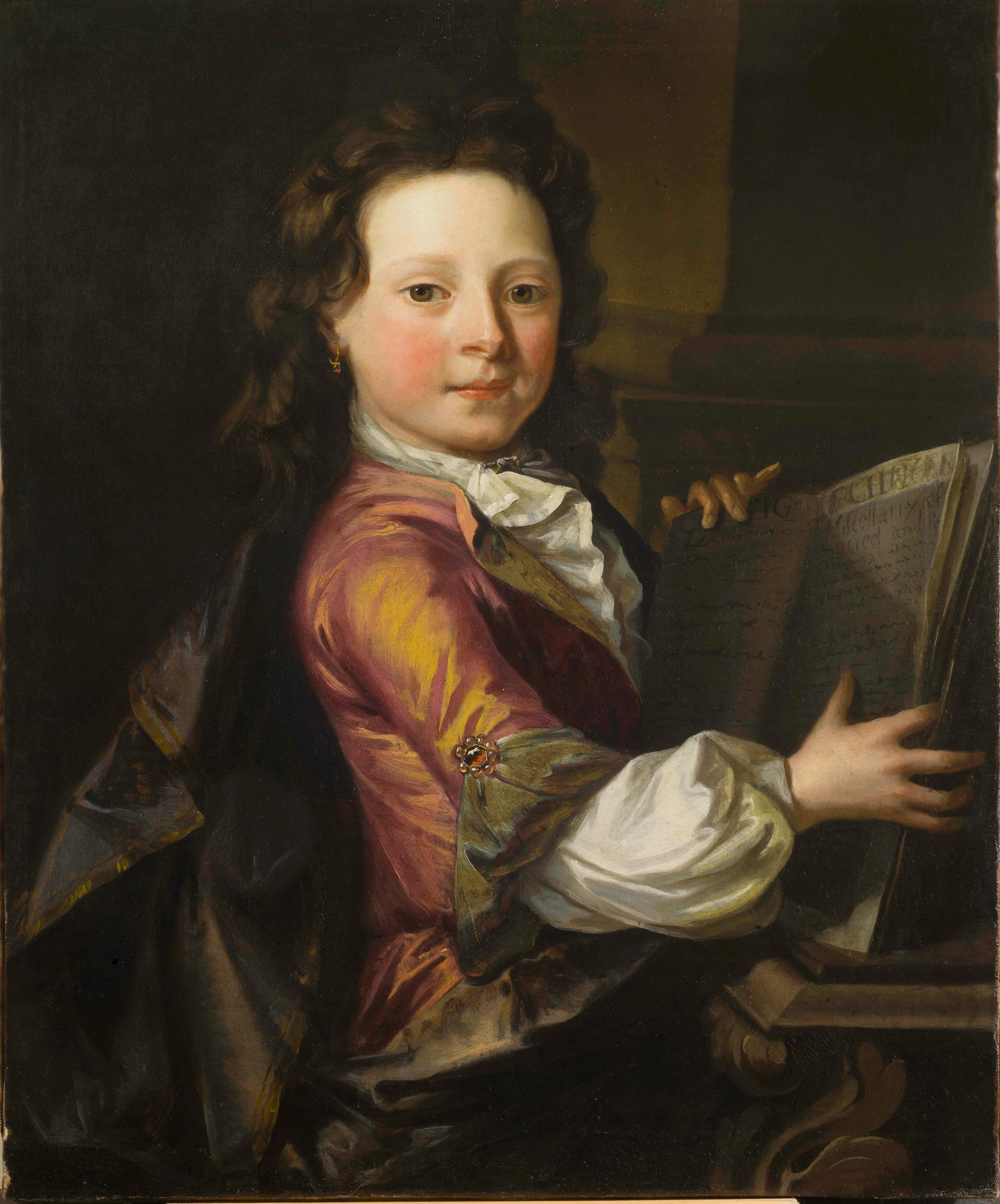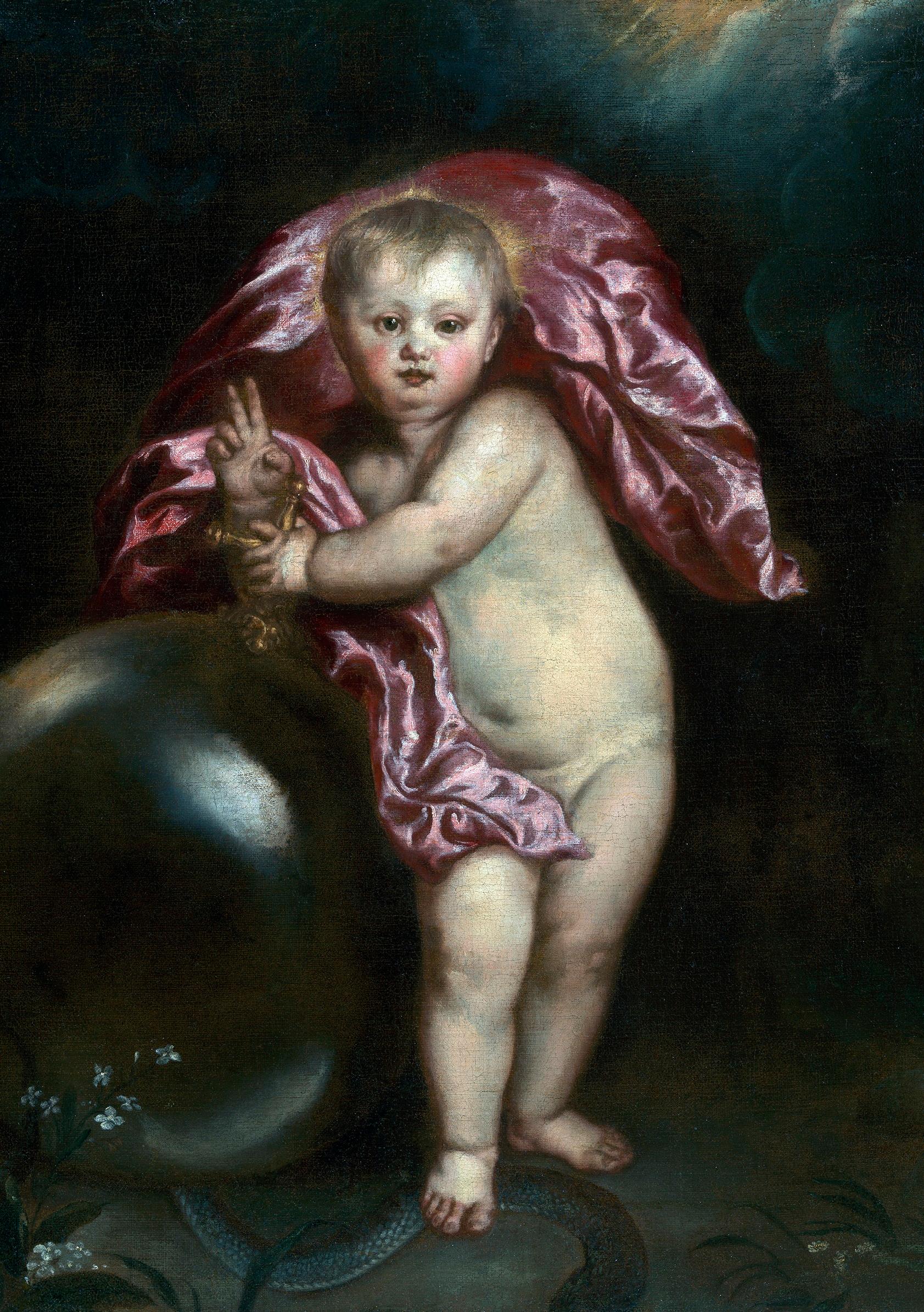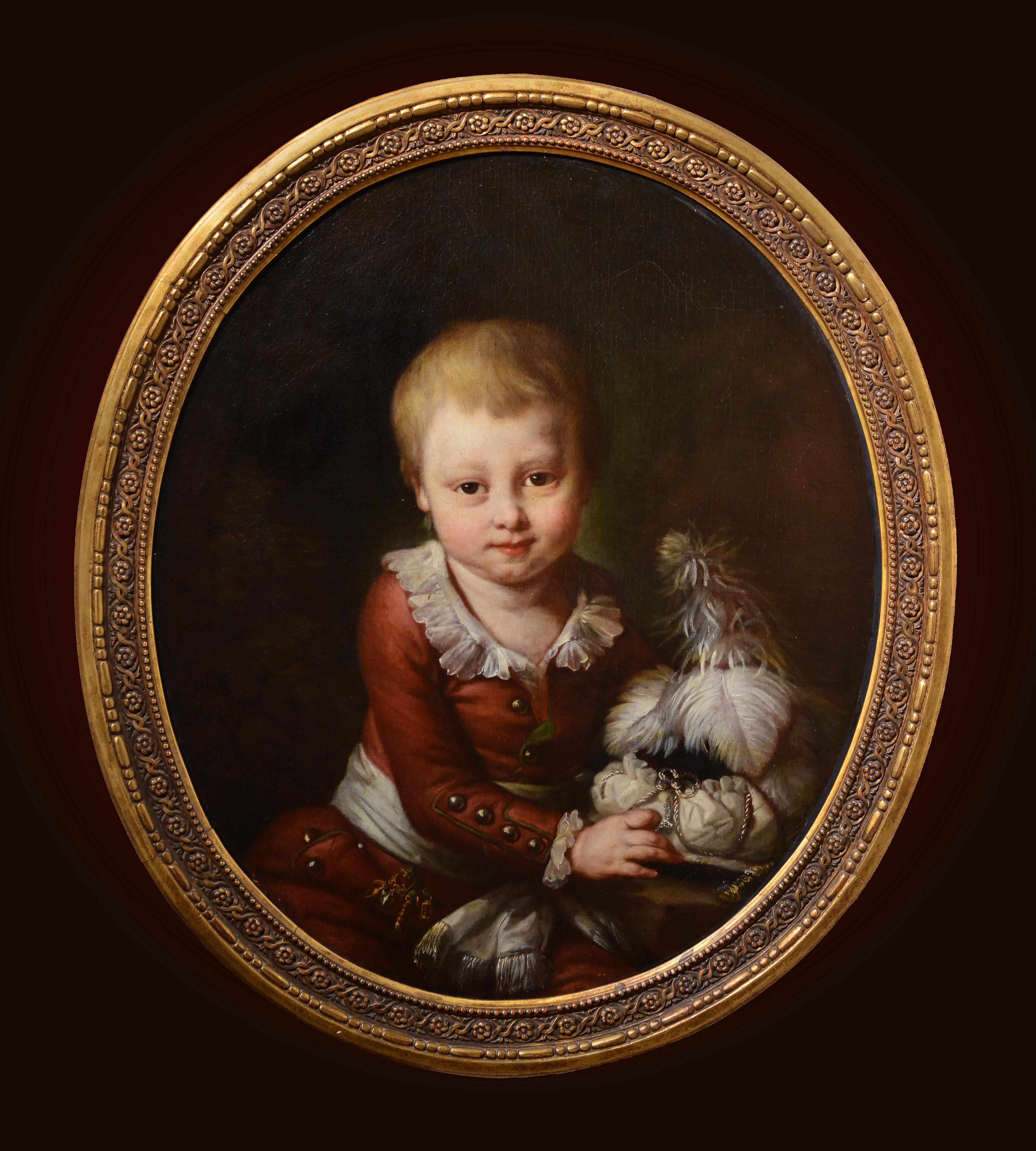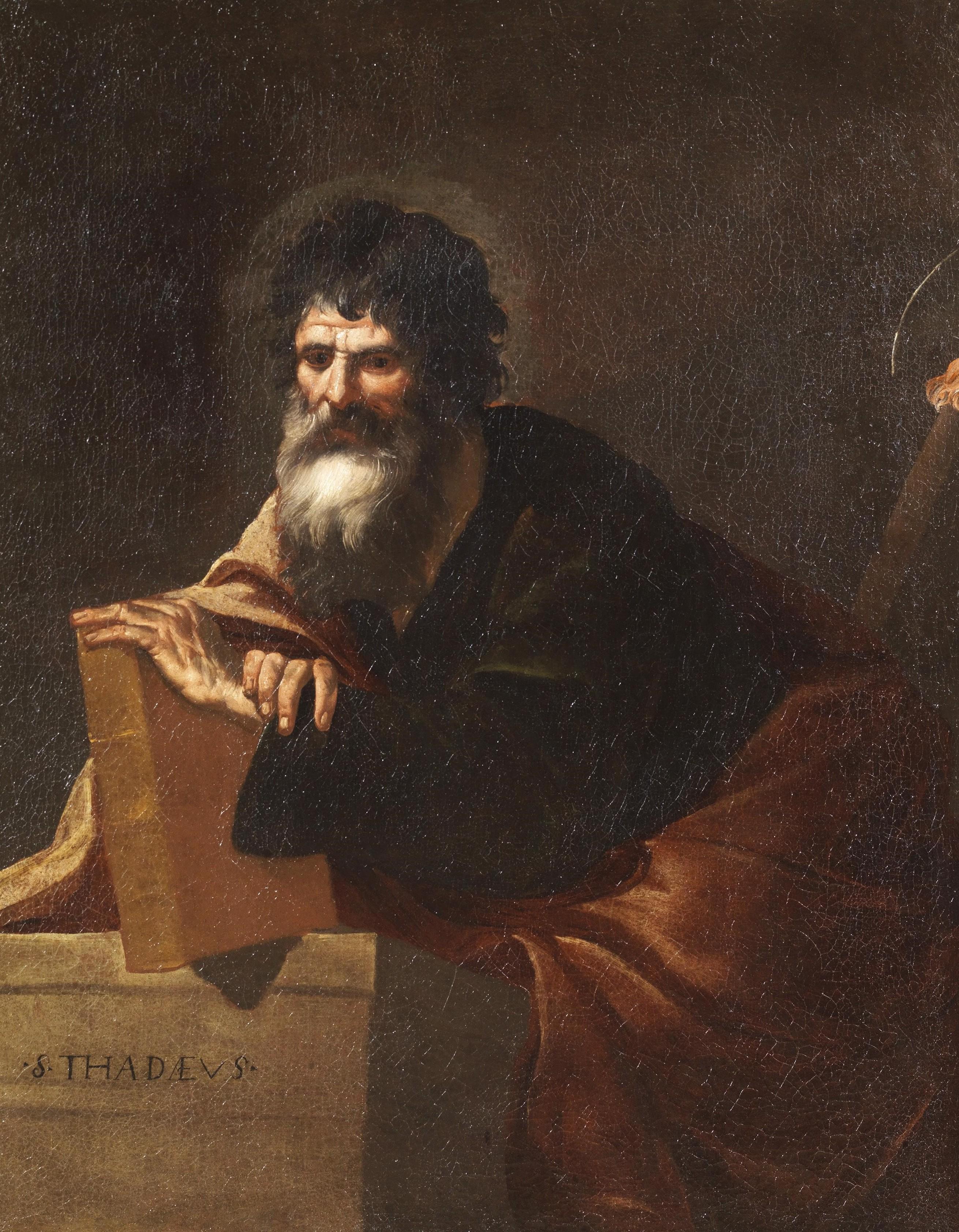Items Similar to Head of a Classical Poet (Socrates?)
Want more images or videos?
Request additional images or videos from the seller
1 of 5
Pier Francesco MolaHead of a Classical Poet (Socrates?)
About the Item
Provenance:
Possibly Antonio Amici Moretti, Rome, 1690
Roy Clyde Gardner, Union, Mississippi, 1970s until 2004; by whom given to:
Mississippi Band of Choctaw Indians, 2004-2010
Literature:
Francesco Petrucci, Pier Francesco Mola (1612-1666): Materia e colore nella pittura del ‘600, Rome, 2012, p. 390, cat. no. B118.
Although born in Ticino, in a town now part of Switzerland, Pier Francesco Mola was definitively a Roman artist, his family having moved to Rome in 1616 when his father was appointed architect to the Camera Apostolica, the papal treasury. Other than two extended trips outside the city, one a two-year stay in Bologna where he worked with Francesco Albani, Mola remained in Rome for his entire life.
Mola’s oeuvre ranges from ambitious religious compositions to evocative landscapes, often with diminutive figures providing only a suggestion of subject matter. Among his most attractive and memorable paintings, however, are half-length and bust-format depictions of ancient literary figures. These vary in identity but have in common the depiction of an elderly bearded figure, often in contemplative or ecstatic attitude, his head crowned with laurel. These figures are characterized by a vigorously executed, richly nuanced physiognomy. Some with vacant eyes and a stringed instrument are traditionally called Homer (Rome, National Gallery; Dresden Gemäldegalerie, Moscow, Pushkin Museum; Ariccia, Palazzo Chigi); others Virgil (Milan, Koelliker Collection), Archimedes (Dresden), or Euclid (Private Collection). Many have only generic titles, such as an “Old Man,” a “Mathematician,” “Astronomer,” “Poet,” or a “Philosopher.”
The subject of the present work has traditionally been considered Socrates, a figure that Mola treated in his multi-figure composition of Socrates Instructing the Young on Self-Knowledge (Lugano, Museo Civico), but there is little internal evidence in the present painting to confirm that. Francesco Petrucci has suggested that the he may be Homer, although the fixed eyes of the subject would be unusual in the depiction of the blind writer. In any case he is very much an ancient literary type, and certainly a Mola type—that of the wise, authoritative, somewhat romantic poet. Mola’s brilliant handling of the paint can be seen in both the bold delineation of features, such as the ear, and the fine elaboration of details, as in the beard. Petrucci believes that the scale of the head suggests that this work may have been conceived as preliminary for a larger composition rather than being an independent study.
The attribution of the present work to Pier Francesco Mola was confirmed on firsthand inspection by Dr. Erich Schleier (in July 2011) and by Dr. Francesco Petrucci (in February 2012), who considers the painting a late work dating from the 1660s.
- Creator:Pier Francesco Mola (1612-1666, Italian)
- Dimensions:Height: 19.5 in (49.53 cm)Width: 14.375 in (36.52 cm)
- Medium:
- Movement & Style:
- Period:
- Condition:
- Gallery Location:New York, NY
- Reference Number:1stDibs: G12061210240

About the Seller
5.0
Recognized Seller
These prestigious sellers are industry leaders and represent the highest echelon for item quality and design.
Established in 1997
1stDibs seller since 2012
17 sales on 1stDibs
Typical response time: 11 hours
- ShippingRetrieving quote...Ships From: New York, NY
- Return PolicyThis item cannot be returned.
More From This SellerView All
- Three AngelsBy Domenico Piola the ElderLocated in New York, NYProvenance: Robert L. and Bertina Suida Manning, New York, until 1996 Private Collection, USA One of the leading artists in Genoa during the second half of the seventeenth century, Domenico Piola came from a successful family of artists, renowned for their many illusionistic ceiling programs throughout Genoese churches and palaces. A prolific draughtsman and painter, Domenico oversaw an extremely productive studio. In addition to his collaborations with numerous other artists, Domenico also provided many designs for book illustrations and prints that circulated throughout Europe, earning him international exposure and high acclaim in his own day. As Dr. Anna Orlando has indicated (written communication), the present work is an early work by Piola, datable from the late 1640s. At this time the young artist came strongly under the influence of Castiglione and Valerio Castello, while admiring the works of Giulio Cesare Procaccini. Piola’s works from this period are exuberant and fluid, and the artist’s love of portraying children is evident from the angels and putti that populate both his altarpieces and more intimate paintings. The present work depicts three angels...Category
17th Century Baroque Figurative Paintings
MaterialsCanvas, Oil
- Portrait of a GentlemanBy Ippolito Scarsella (Scarsellino)Located in New York, NYProvenance: Suida-Manning Collection, New York Private Collection Exhibited: Venetian Paintings of the Sixteenth Century, Finch College Museum of Art, New York, October 30-December 15, 1963, no. 31. Veronese & His Studio in North American Collections, Birmingham Museum of Art, Oct. 1-Nov. 15, 1972, and Montgomery Museum of Fine Arts, Dec. 5-Dec. 31, 1972 Literature: Robert L. Manning, A Loan Exhibition of Venetian Paintings of the Sixteenth Century, exh. cat. New York 1963, cat. no. 31ill., as by Veronese Stephen Clayton and Edward Weeks, eds., introduction by David Rosand, Veronese & His Studio in North American Collections, Birmingham 1972, as by Veronese, p. 38 ill. Terisio Pignatti, Veronese, Venice 1976, I, p. 199, cat. no. A225, II, fig. 908, as attributed to Veronese Terisio Pignatti and Filippo Pedrocco, Veronese; catalogo completo dei dipinti, Florence 1991, no. 54°, as attributed to Veronese. Terisio Pignatti and Filippo Pedrocco, Veronese, Milan 1995, II, pp. 517-518ill., cat. no. A 56, under attributed paintings, by Veronese and workshop) John Garton, Grace and Grandeur; The Portraiture of Paolo Veronese, London-Turnhout 2008, p. 237, fig. 77, cat. no. R16, as workshop of Veronese. Scarsellino’s art is widely regarded as critical link between the Renaissance and the Baroque styles in Emilian painting; not only was he an important transmitter of the heritage of the Renaissance, but he was also open to innovative ideas, and was one of the earliest to experiment with the trend to naturalism that would become fundamental to art of the new century. Born around 1550, he received his earliest training from his father Sigismondo, an architect and painter; it was probably while working at his father’s side as a youth that he acquired the nickname Scarsellino, or “little Scarsella”. After absorbing the principles of his art in Ferrara and Parma, he went to Venice in 1570, staying for four years and working in the shop of Veronese. In the following decade, his art —especially in terms of its piety and its development of landscape— demonstrates a strong sympathy with that of the Carracci, with whom he worked in 1592-1593 at the Palazzo dei Diamanti in Ferrara. Maria Angela Novelli and later Alessandra Frabetti both propose that Scarsellino traveled to Rome, although such a trip has not been documented; if he did travel to Rome, it probably would have occurred during the years that Scarsellino’s colleagues Agostino and Annibale Carracci were there, that is, beginning in 1595 and until 1609. The last decades of Scarsellino’s career again involve stylistic experimentation, this time in a manner that would bring his work very close to the progressive figurative naturalism of Carlo Bononi and prepare the way for Guercino. The present portrait of a distinguished gentleman had been long thought to be by Paolo Veronese and was in fact attributed to him by such distinguished connoisseurs as Adolfo Venturi and Wilhelm Suida. The portrait’s style is, however, distinct from Veronese’s, although clearly indebted to it, and the attribution to the young Scarsellino is wholly convincing. The painting would then date from the 1570s – a date confirmed by the costume the subject wears. The puffed hat that appears in the painting had a rather short-lived vogue in the early 1570s. One sees it in Giambattista Moroni’s Portrait of Count...Category
18th Century and Earlier Baroque Portrait Paintings
MaterialsCanvas, Oil
- Portrait of a Bewigged GentlemanBy Vittore GhislandiLocated in New York, NYVittore Ghislandi, called Fra Galgario Provenance: Robert L. and Bertina Suida Manning, New York, ca. 1966-1996 Private Collection, USA Exhibited: “Eighteenth Century European Pai...Category
18th Century Baroque Paintings
MaterialsCopper
- Saint Martin de PorresLocated in New York, NYProvenance: Private Collection, New York, until 2022. Martín de Porres was born in Lima in 1579, the illegitimate son of a Spanish-American father, J...Category
Late 18th Century Paintings
MaterialsCanvas, Oil
- Portrait of George and Edward Finch-Hatton in Van Dyck DressBy David MartinLocated in New York, NYAppointed Portrait Painter to the Prince of Wales in Scotland in 1785, David Martin was the leading Scottish portrait painter of his generation. The artist is best known in the United States for his portrait of Benjamin Franklin, which is in the White House collection, Washington, D.C. The sitters depicted in this double portrait were the sons of the British diplomat Edward Finch-Hatton. George (1747-1823), later of Eastwell Park, Kent, is shown seated, reading an ancient charter or medieval manuscript...Category
18th Century and Earlier Paintings
MaterialsCanvas, Oil
- Head of an AngelLocated in New York, NYProcaccini was born in Bologna, but his family moved to Milan when the artist was eleven years old. His artistic education was evidently familial— from his father Ercole and his elder brothers Camillo and Carlo Antonio, all painters—but his career began as a sculptor, and at an early age: his first known commission, a sculpted saint for the Duomo of Milan, came when he was only seventeen years old. Procaccini’s earliest documented painting, the Pietà for the Church of Santa Maria presso San Celso in Milan, was completed by 1604. By this time the artist had made the trip to Parma recorded by his biographers, where he studied Correggio, Mazzola Bedoli, and especially Parmigianino; reflections of their work are apparent throughout Procaccini's career. As Dr. Hugh Brigstocke has recently indicated, the present oil sketch is preparatory for the figure of the angel seen between the heads of the Virgin and St. Charles Borrommeo in Procaccini's altarpiece in the Church of Santa Afra in Brescia (ill. in Il Seicento Lombardo; Catalogo dei dipinti e delle sculture, exh. cat. Milan 1973, no. 98, pl. 113). As such it is the only known oil sketch of Procaccini's that can be directly connected with an extant altarpiece. The finished canvas, The Virgin and Child with Saints Charles Borrommeo and Latino with Angels, remains in the church for which it was painted; it is one of the most significant works of Procaccini's maturity and is generally dated after the artist's trip to Genoa in 1618. The Head of an Angel is an immediate study, no doubt taken from life, but one stylistically suffused with strong echoes of Correggio and Leonardo. Luigi Lanzi, writing of the completed altarpiece in 1796, specifically commented on Procaccini's indebtedness to Correggio (as well as the expressions of the angels) here: “Di Giulio Cesare...Category
17th Century Old Masters Figurative Paintings
MaterialsCanvas, Paper, Oil
You May Also Like
- Portrait of a Boy, John Closterman, Large English Portrait Art, Old MasterBy John ClostermanLocated in Greven, DEJohn Clostermann (Osnabrück 1660 - 1711 London) Portrait of a boy, maybe Charles Hinde Oil on canvas, 61 x 74,6 cm John Closterman (also Klosterman) was a portrait painter of the late 17th and early 18th centuries. He primarily portrayed English noblemen and European aristocratic families. His father was already an artist and he trained his son. In 1679 he went to Paris and studied with Francois de Troy. In 1681 he was in London and worked for the artist John Riley, whose studio he took over after his death. In 1696 he was invited to the Spanish court...Category
17th Century Baroque Figurative Paintings
MaterialsCanvas, Oil
- Christ as Salvator Mundi, Circle Van Dyck, Flemish Old Master, Christ ChildBy Anthony van DyckLocated in Greven, DEThe Christ Child as Redeemer of the World Oil on Canvas, 69.3 x 49.7 cm Provenance Private Collection, Belgium The present painting is known in different versions. One of them is ...Category
17th Century Baroque Figurative Paintings
MaterialsCanvas, Oil
- Testa di VecchioLocated in Balerna, TIFrancesco Fracanzano (Monopoli 1612-Napoli 1656) Testa di vecchio Olio su tela, cm 66x52,5 La tela presenta la figura di un uomo anziano a mezza figura con lo...Category
17th Century Baroque Portrait Paintings
MaterialsCanvas, Oil
- Portrait of a Сhild 18th century French master Baroque Oil PaintingLocated in Stockholm, SEThe portrait is attributed to the French painter Monique Daniche (1737 - 1824) Magnificently painted baroque portrait of unidentified noble child wearing fashionable dress and holdin...Category
Late 18th Century Baroque Portrait Paintings
MaterialsCanvas, Wood, Oil
- Neapolitan caravagist artist, 17th century SAINT JUDE THADDEUSLocated in Tricase, ITNeapolitan caravagist artist, 17th century SAINT JUDE THADDEUS oil on canvas, cm 127x101 (The painting is part of a triptych together with the two holy apostles Saint Thomas and Sai...Category
1620s Baroque Figurative Paintings
MaterialsCanvas, Oil
- G Negri called Il Boccia Baroque Figurative Painting 17th century oil canvasBy Girolamo Negri called Il BocciaLocated in Florence, ITOil on canvas, 62 x 51 cm (without the frame) Even if on the background there is an attribution to “Francesco Gessi pupil of Guido Reni” by the bolognese art historian Guido Zucchini (dated 1945), recent studies are tending to add it to the corpus of Girolamo Negri called Il Boccia (Bologna 1648-1718) due to lots of similarities with his style (the pale and warm palette chosen, the profile) The painting represents a lady on profile wearing a brown turban, a yellow clock...Category
Late 17th Century Baroque Figurative Paintings
MaterialsCanvas, Oil
Recently Viewed
View AllMore Ways To Browse
Antique Union Cases
Large Scale Bust
Cat Ears
Antique Camera Art
Pier Head
Antique Cat Figure
Antique Stringed Instruments
Antique String Instrument
Antique Stringed Instrument
Dresden Figure
Virgil Collection
Diminutive Painting
Antique Dr Scale
Beard Oil Man
Cat Busts
Busts Of Philosophers
Diminutive Landscapes
Bearded Young Man





